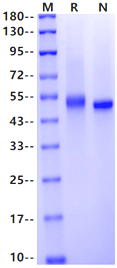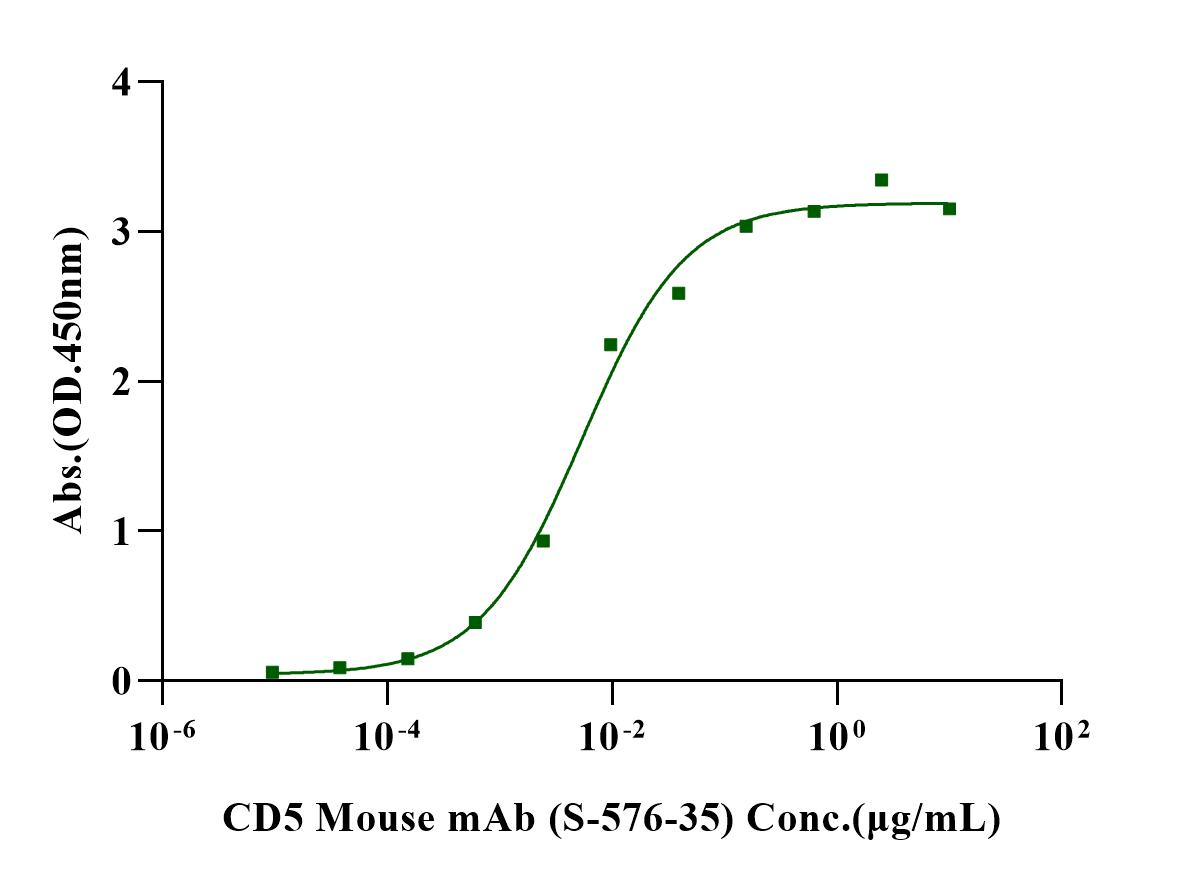Arg25-Asn371, with C-terminal 10*His RLSWYDPDFQARLTRSNSKCQGQLEVYLKDGWHMVCSQSWGRSSKQWEDPSQASKVCQRLNCGVPLSLGPFLVTYTPQSSIICYGQLGSFSNCSHSRNDMCHSLGLTCLEPQKTTPPTTRPPPTTTPEPTAPPRLQLVAQSGGQHCAGVVEFYSGSLGGTISYEAQDKTQDLENFLCNNLQCGSFLKHLPETEAGRAQDPGEPREHQPLPIQWKIQNSSCTSLEHCFRKIKPQKSGRVLALLCSGFQPKVQSRLVGGSSICEGTVEVRQGAQWAALCDSSSARSSLRWEEVCREQQCGSVNSYRVLDAGDPTSRGLFCPHQKLSQCHELWERNSYCKKVFVTCQDPNGGGSGGGSHHHHHHHHHH
50-55kDa
Reconstitute at 0.1-1 mg/ml according to the size in ultrapure water after rapid centrifugation.
· 12 months from date of receipt, lyophilized powder stored at -20 to -80℃.
· 3 months, -20 to -80℃ under sterile conditions after reconstitution.
· 1 week, 2 to 8℃ under sterile conditions after reconstitution.
· Please avoid repeated freeze-thaw cycles.
1、Zola H. et al. (2007) CD molecules 2006-human cell differentiation molecules. J Immunol Methods. 318(1-2): 1-5.
2、Ho I C. et al. (2009) GATA3 and the T-cell lineage: essential functions before and after T-helper-2-cell differentiation. Nat Rev Immunol. 9(2): 125-135.
3、Matesanz-Isabel J. et al. (2011) New B-cell CD molecules. Immunology Letters. 134(2): 104-112.
CD5, one of the earliest markers used to identify T cells, is a 67 kD transmembrane molecule that is constitutively expressed on all T cells and is a negative regulator of lymphocyte function. T-cell surface glycoprotein CD5 is also known as Lymphocyte antigen T1/Leu-1 and LEU1. CD5 is also a negative regulator of thymus cell stimulation. Lack of CD5 promotes positive selection of poorly selected thymocytes and increases negative selection of high-affinity clones. Along with its negative effect on T cell stimulation, CD5 was shown to diminish activation-induced cell death (AICD) through its interaction with casein kinase 2 (CK2).


Immobilized CD5 His Tag Protein, Human (Cat. No. UA010390) at 2.0μg/mL (100μL/well) can bind CD5 Mouse mAb (S-576-35) with EC50 of 3.75-7.94 ng/mL.